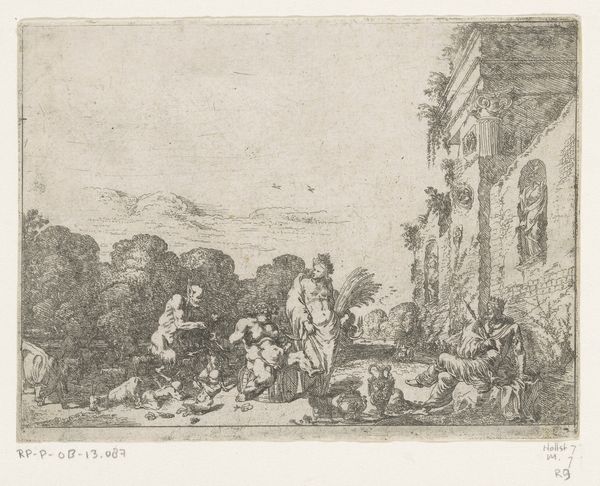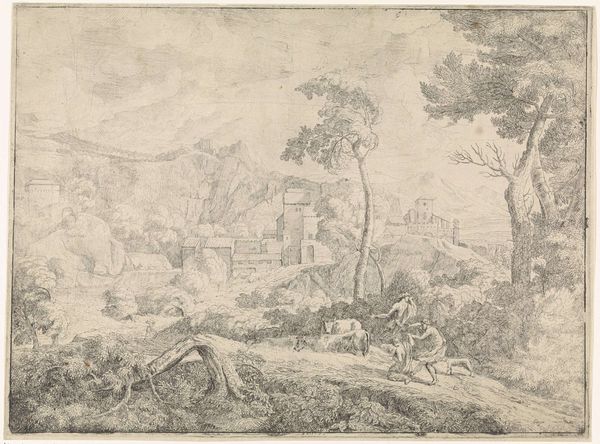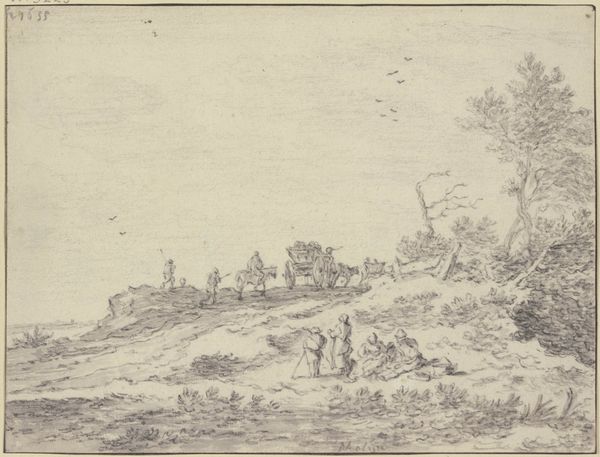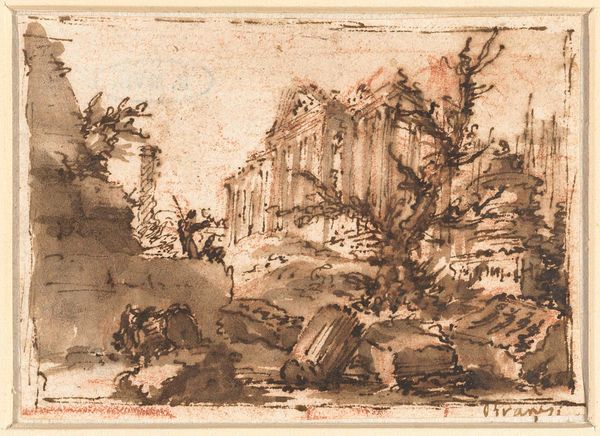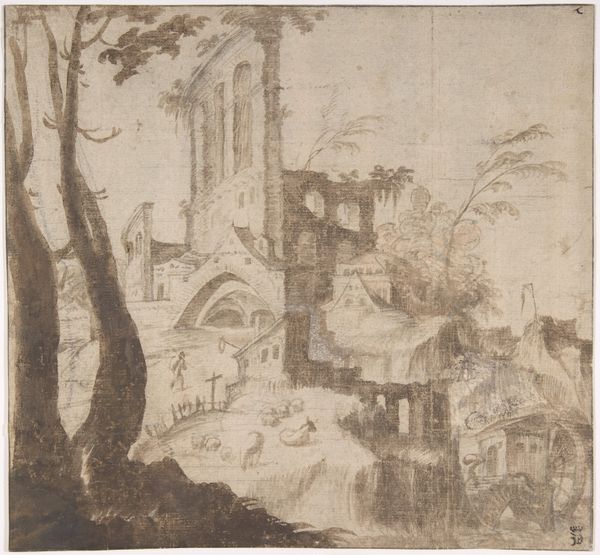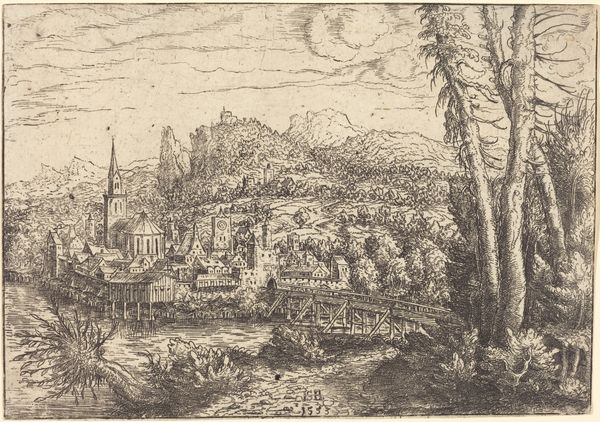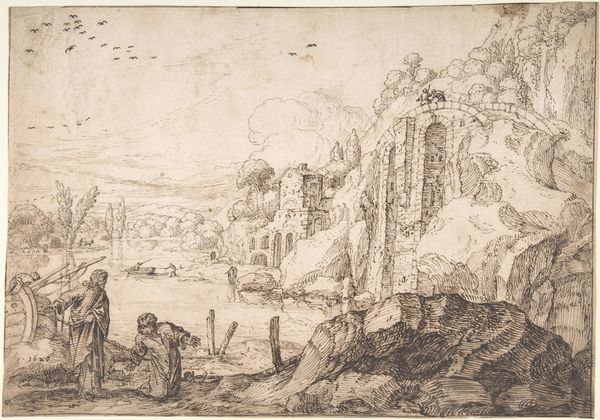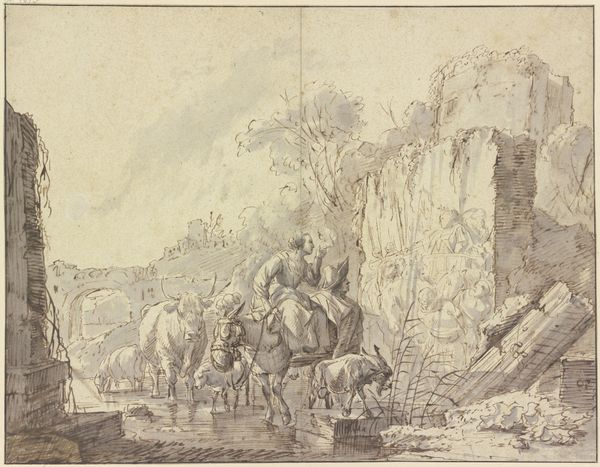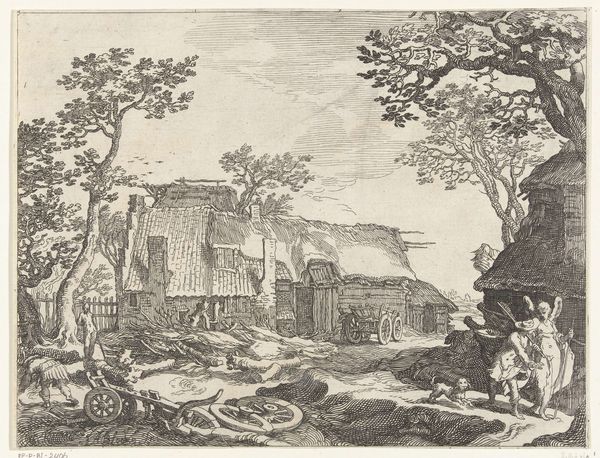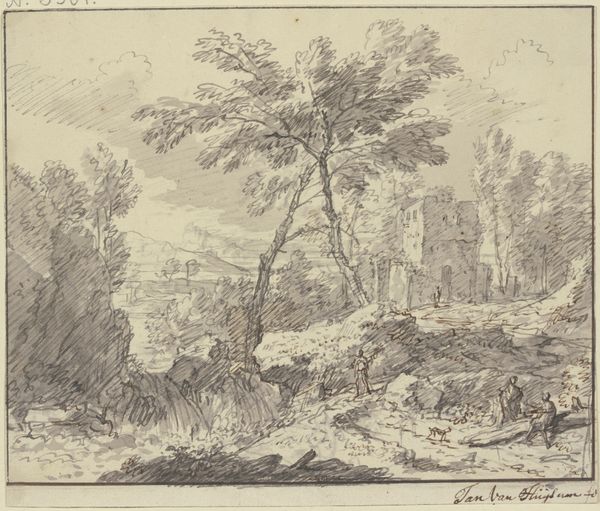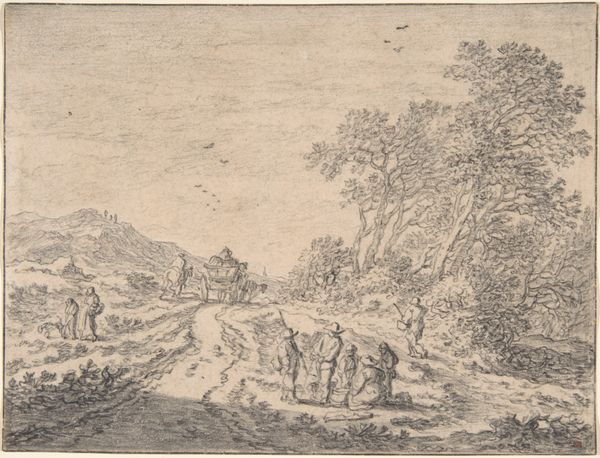
Corsica seated before satyrs on the bank of a river, from a pair of plates for Battista Guarini's 'Il Pastor fido' 1640
0:00
0:00
drawing, print, etching
#
drawing
#
allegory
#
baroque
# print
#
etching
#
landscape
#
figuration
Dimensions: sheet: 3 7/16 x 4 3/4 in. (8.8 x 12.1 cm)
Copyright: Public Domain
Curator: This etching is by Bartholomeus Breenbergh, dating back to 1640. It's part of a pair of plates illustrating Battista Guarini's 'Il Pastor fido,' and it’s titled "Corsica seated before satyrs on the bank of a river." Editor: The immediate impression is one of idyllic decay. We have this tranquil river scene, juxtaposed with monumental ruins that hint at a lost civilization. The contrast creates an atmosphere that is quite alluring. Curator: Alluring, indeed. Note how Breenbergh employs a fine network of lines to define form and texture. See how the architectural elements on the left use closely-knit hatching, conveying the weight and aged surface of stone? It speaks volumes about the human relationship with time and mortality, typical for baroque landscapes. Editor: I see how that structural technique is used to represent tangible historical weight, yet I am intrigued by the political message it evokes. In this narrative of 'Il Pastor fido' what public function could it serve other than romanticising a pre-existing social order that romanticizes this historical arc? Curator: It is not only a depiction of the titular figure but is also deeply steeped in the conventions of allegorical landscape. Consider Corsica’s positioning relative to the satyrs: her composure signals her status, a stark reminder about power and status of this society. Editor: So, you see it embodying, rather than critiquing, the values and socio-political stratifications of the time? How do we account for these nuances of power within such a picturesque presentation? Does the serene, balanced composition belie the underlying dynamics at play? Curator: Precisely. And if we follow a semiotic reading, then all details within are purposefully laid-out; The placement of Corsica against this decay prompts reflection of its own culture, no? It's all working in dialogue with one another. Editor: A compelling point. Breenbergh certainly creates a scene pregnant with contemplation, layering idyllic imagery with ruins, making the whole much greater than just another picture of nymphs. Thank you for unveiling these elements. Curator: My pleasure; recognizing the subtle arrangements allows a deeper understanding of its complex cultural layers and aesthetic structure.
Comments
No comments
Be the first to comment and join the conversation on the ultimate creative platform.
